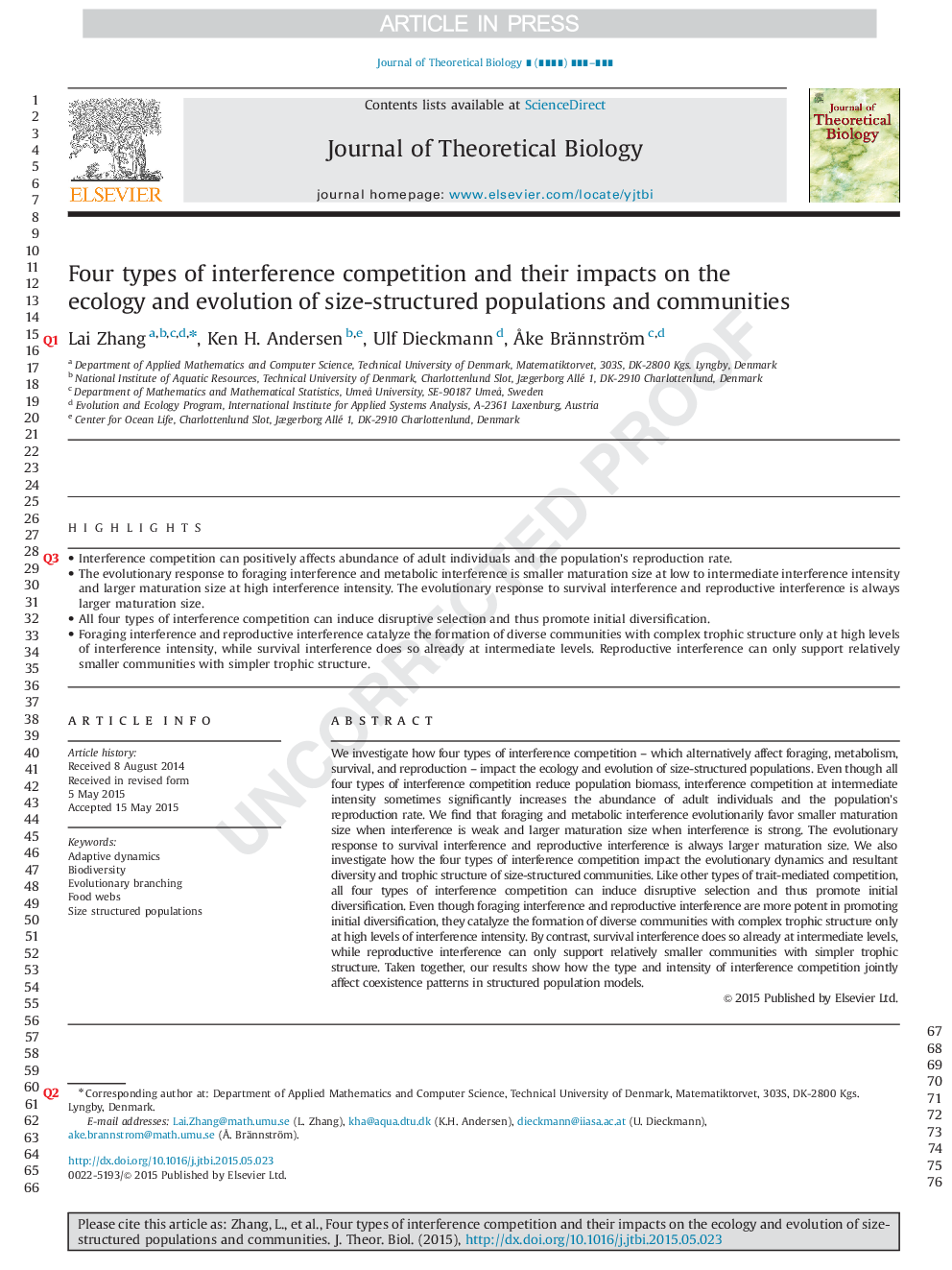| Article ID | Journal | Published Year | Pages | File Type |
|---|---|---|---|---|
| 6369635 | Journal of Theoretical Biology | 2015 | 11 Pages |
Abstract
We investigate how four types of interference competition - which alternatively affect foraging, metabolism, survival, and reproduction - impact the ecology and evolution of size-structured populations. Even though all four types of interference competition reduce population biomass, interference competition at intermediate intensity sometimes significantly increases the abundance of adult individuals and the population׳s reproduction rate. We find that foraging and metabolic interference evolutionarily favor smaller maturation size when interference is weak and larger maturation size when interference is strong. The evolutionary response to survival interference and reproductive interference is always larger maturation size. We also investigate how the four types of interference competition impact the evolutionary dynamics and resultant diversity and trophic structure of size-structured communities. Like other types of trait-mediated competition, all four types of interference competition can induce disruptive selection and thus promote initial diversification. Even though foraging interference and reproductive interference are more potent in promoting initial diversification, they catalyze the formation of diverse communities with complex trophic structure only at high levels of interference intensity. By contrast, survival interference does so already at intermediate levels, while reproductive interference can only support relatively smaller communities with simpler trophic structure. Taken together, our results show how the type and intensity of interference competition jointly affect coexistence patterns in structured population models.
Related Topics
Life Sciences
Agricultural and Biological Sciences
Agricultural and Biological Sciences (General)
Authors
Lai Zhang, Ken H. Andersen, Ulf Dieckmann, Ã
ke Brännström,
